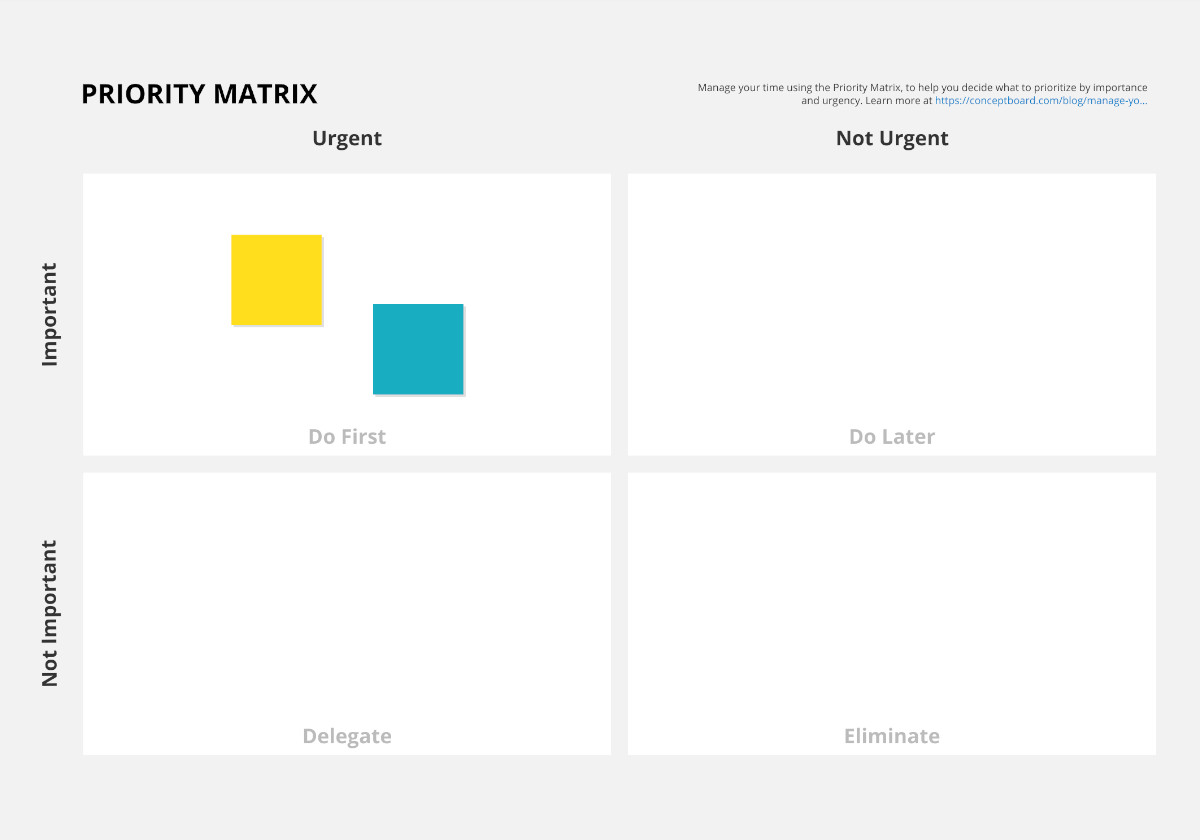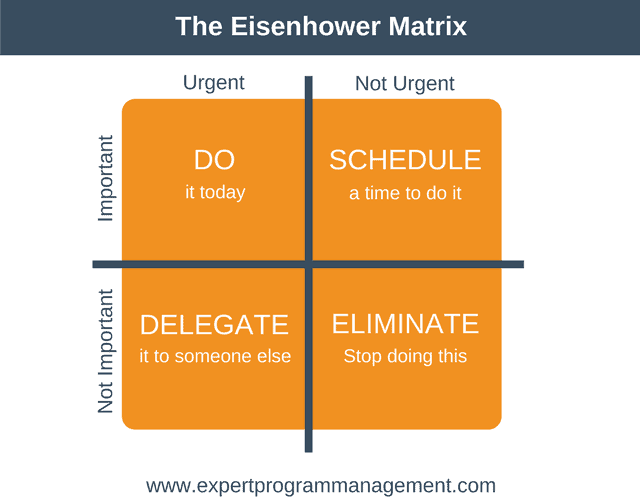


Drag Apple Mail, Evernote links, Omnifocus tasks, PDFs, files, images, URLs and more onto the quadrant to create linked tasks.Double-click on any empty space to create a task new.Visualize who is in charge of what through collaborator avatars.See all your tasks for each project neatly organized into customizable quadrants that can convey priority level and urgency.

Urgency priority matrix for mac#
Interface Overview for Priority Matrix Team for Mac
Urgency priority matrix Offline#

In context, examples of these kinds of issues would be if a workgroup server crashed, or if a classroom’s technology stops working. Of course, there are many more other guises these critical issues could take, but they should usually include most of the above factors. There are potential legal or regulatory ramifications.Įxamples of these sorts of failures would be network outages, virus infections, order system failure, or email outages.The majority of or all users are affected.There is little to no functionality and there are no workarounds.We use up to P7, but this number can differ with the amount of urgency and impact levels you use. Let’s give some real-world examples of what these levels of urgency might correlate to: Critical priority tasksĪ task classed as ‘critical’ (P2 and up) would usually include the following: This is the priority matrix we work with (and that is also used in our tool):įrom the formula given above, we can assign any number of priorities. “Is this something that risks sinking the entire organization, or something that makes John in Accounting mildly inconvenienced?”Īs for ‘Urgency’, we have found that 3 levels are ideal for most organizations: critical, normal, and low. To use ourselves as an example (because we know our own organization best): at TOPdesk we work with 5 ‘Impact’ levels: organization, location, department, team and person. How critical are these systems/services to the organization?.How many systems or services are affected?.How many users (and what type of user – perhaps VIP users, or part-time staff) are affected?.But how do we decide in the real world what counts towards these factors? Essentially, there are four things to consider, which will help us map out a priority matrix: When it comes to Incident Management, you may already know that a task’s priority can be determined with the equation ‘Impact x Urgency’.


 0 kommentar(er)
0 kommentar(er)
